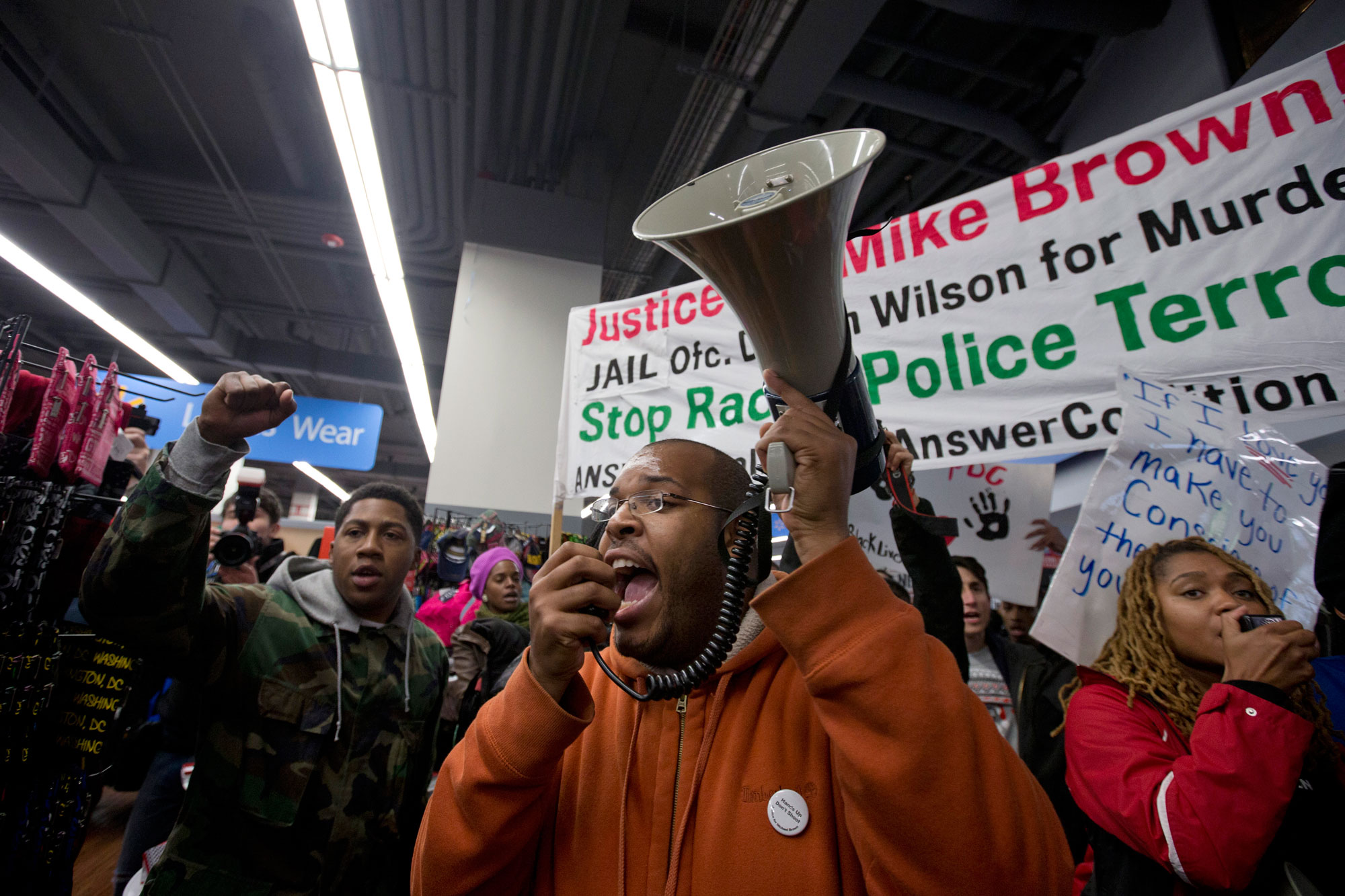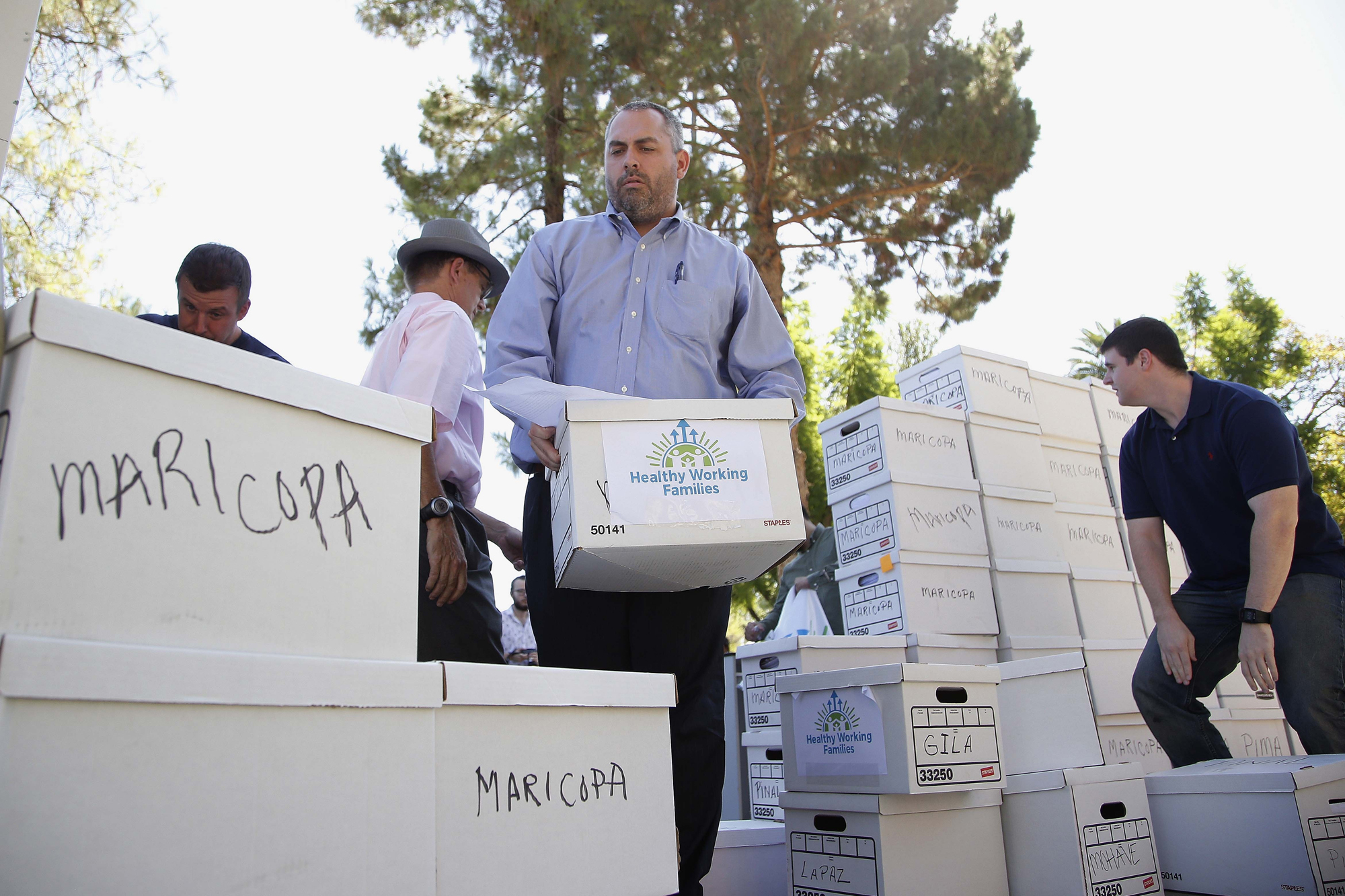While the media and much of the public have been consumed with the spectacle of dysfunction and failure in the Trump White House—The Mooch, the Russia investigation, and the demise of the Republican Party’s plans to repeal the Affordable Care Act—the administration has quietly succeeded in doing some real damage that has received little attention. In normal times, these actions likely would get more coverage, and that points to a problem of access to vital information as citizens and activists try to adjust to the daily tectonic shifts of Trump.
Here are a few big deal political maneuvers that haven’t received the reporting—or an outcry from a distracted public—that they need and deserve.
Reversing the Ban on Neurotoxic Pesticide
In March, the Trump administration’s Office of Pesticide Programs—which last year received 30 percent of its operating budget from the pesticide-manufacturing industry—canceled the Environmental Protection Agency’s proposed ban of chlorpyrifos, a common pesticide used on crops that was derived from nerve gas developed by the Nazis.
Get TalkPoverty In Your Inbox
The Obama administration had called for the ban after “three long-term, independently funded studies showed the substance was toxic,” according to Reuters. Particularly vulnerable are farmworkers, and the brain development of children, infants, and fetuses.
“Chlorpyrifos has been shown beyond any shadow of a doubt to damage the brains of children, especially those of fetuses in the womb,” said Philip Landrigan, a pediatrician and dean for global health at the Icahn School of Medicine at Mount Sinai in New York. The American Academy of Pediatrics also urged EPA Administrator Scott Pruitt to reconsider his decision.
Yet Pruitt saw fit to hail the ban reversal as “returning to using sound science in decision-making.”
Dow Chemical—whose CEO leads a White House manufacturers working group—sells the chemical. More than 6 million pounds of it are used annually in the United States on crops like apples, oranges, broccoli, berries, and tree nuts. Two months after Pruitt’s decision, more than 50 farmworkers in cabbage fields were sickened when winds blew the chemical from nearby mandarin orchards.
You can get informed and fight for a chlorpyrifos ban here and here. You can tell grocers to stop buying foods that might have residue from the chemical here. Senator Tom Udall (D-NM) has introduced a bill to ban the pesticide.
Nixing Science-Based Teen Pregnancy Prevention Programs
Last month, the administration cut more than $213 million from teen pregnancy prevention programs and research, eliminating the final two years of funding for 5-year projects. More than 80 institutions across the country lost their funding, and none of the programs provided abortion counseling.
Health officials told the Center for Investigative Reporting (CIR) that denying funding midway through a grant is “highly unusual and wasteful because it means there can be no scientifically valid finding.”
Some of the programs cut include: work Johns Hopkins University has been doing with American Indian teens to reduce sexually transmitted infections and pregnancy; University of Southern California’s workshops for parents on “how to talk to middle school kids about delaying sexual activity”; the University of New Mexico Health Sciences Center program that helps “doctors talk to Native American and Latino teens about avoiding pregnancy”; and Planned Parenthood’s work in five states to bring “rural youths and parents together to share family values, strengthen family bonds, and talk about healthy relationships and sexual health.”
“We’re not out there doing what feels good,” Luanne Rohrbach, associate professor of preventive medicine at USC, told CIR. “We’re doing what we know is effective.”
Despite the fact that the teen birth rate has declined steadily over the past 20 years, the ongoing need for science-based approaches to pregnancy prevention is clear. CIR notes that the rate is still high compared to other industrialized nations, and the decline isn’t as steep in low-income communities. Perhaps that’s why the cuts were made outside the normal appropriations process as the administration pursues an ideologically-driven agenda that is out of step with real public health and education needs.
You can let your elected representatives know how you feel about this decision here.
DACA at Risk
In June, 10 states, led by Texas Attorney General Ken Paxton, informed the Trump administration that it must end the Deferred Action for Childhood Arrivals (DACA) program by September 5 or face a lawsuit that would be heard by an anti-immigrant judge who has halted similar initiatives in the past.
Past assurances by a notoriously fickle president to keep DACA intact are hardly sufficient. Even if the administration ignores the deadline, there is little reason to believe Attorney General Jeff Sessions would defend DACA in court. As Representative Luis Gutiérrez (D-IL) told The Washington Post, “Jeff Sessions is going to say, ‘Deport them.’ If you’re going to count on Jeff Sessions to save DACA, then DACA is ended.”
More than 780,000 young people, known as “Dreamers,” have been protected from deportation and made eligible to work since DACA’s inception in 2012. Seventy-eight percent of voters believe Dreamers should be allowed to remain in the United States permanently, including 73 percent of Trump voters.
Aside from the moral argument that people who grew up as Americans should be allowed to remain in the country, the Center for American Progress notes the economic case as well. Ending DACA would drain more than $460 billion from the national GDP over the next decade, and remove about 685,000 workers from the economy. Combined, the 10 states that are suing would lose $8 billion annually.
There is an opportunity take this issue out of the hands of extremists like the Texas attorney general and an unpredictable Trump administration. In July, the DREAM Act of 2017 was introduced with bipartisan support from Senators Dick Durbin (D-IL), Jeff Flake (R-AZ), Lindsey Graham (R-SC), and Chuck Schumer (D-NY).
You can let your elected representatives know you want them to support DACA here.
Chemical Accident Prevention and Protection Delayed
After a 2013 explosion at a fertilizer storage facility in West, Texas, killed 15 people, including 12 firefighters, and injured 260—the Obama administration directed the Environmental Protection Agency to strengthen the safety requirements for facilities using and storing potentially toxic or dangerous chemicals.
In January 2017, after four years of deliberations, the EPA finalized its Chemical Accident Safety Rule, which would apply to more than 12,000 chemical facilities across the nation. It included commonsense measures like making information more available to communities to support emergency preparedness, and safety audits.
However, in June, after complaints from the chemical industry that the new rule “may actually compromise the security of our facilities, emergency responders, and our communities,” the Trump administration delayed implementation until February 2019. Even as it did so, it released a fact sheet noting 58 deaths and $2 billion worth of property damage caused by 1,517 facility accidents over the past 10 years.
A coalition of 11 states led by New York Attorney General Eric Schneiderman has sued the EPA over the delay. You can tell EPA Administrator Pruitt to implement the new rule here.
Trump is losing many of his high-profile fights. But in dozens of less-noticed ways, his administration is advancing its extreme agenda that exacerbates political and economic inequality. As much of the media remains fixated on the Russia story and the Great Trump Dysfunction, journalists and advocates will need to work harder than ever to make sure the damaging daily actions of this administration aren’t ignored.
This article is a collaboration between TalkPoverty and The Nation.
Alison Cassady, Director of Domestic Energy and Environment Policy at the Center for American Progress, contributed research for this article.












